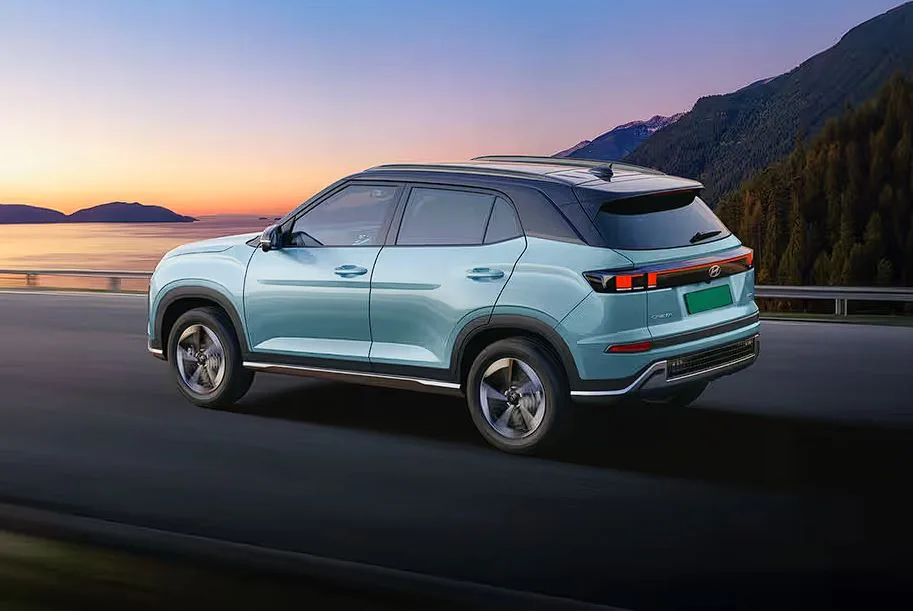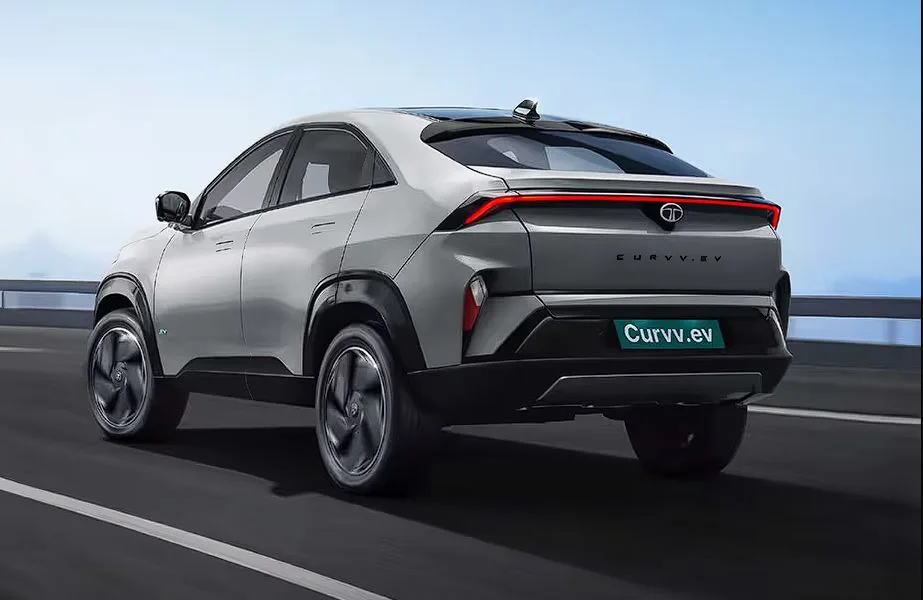The electric revolution is in full swing, and two heavyweights are squaring off in the hotly contested ₹25 lakh EV segment. In one corner, we have the sleek and futuristic Tata Curvv EV. In the other, the tried-and-true Hyundai Creta formula reimagined for the electric age. As I stood between these two silent contenders at the bustling Auto Expo 2025, the air was thick with anticipation. Which of these electric SUVs truly deserves your hard-earned money?
Let’s dive deep into this Tata Curvv EV vs Hyundai Creta Electric comparison, breaking down everything from range and performance to features and value for money. Buckle up, EV enthusiasts—this is going to be an electrifying ride.
Price Wars: Breaking Down the Cost of Going Electric
Before we pop the hood (figuratively speaking) on these EVs, let’s talk numbers. After all, in the world of electric vehicles, price often remains the biggest hurdle for potential buyers.
| Model | Starting Price | Top-end Price |
|---|---|---|
| Tata Curvv EV | ₹17.49 lakh | ₹22.00 lakh |
| Hyundai Creta Electric | ₹18.00 lakh | ₹23.50 lakh |
*All prices are ex-showroom, New Delhi
At first glance, the Tata Curvv EV appears to have a slight edge in pricing. However, as Rahul Agarwal, EV market analyst at AutoTech Insights, points out, “The price difference narrows significantly at higher trim levels. Buyers in this segment are often willing to splurge on top-end variants for the latest tech and features.”
It’s worth noting that both models undercut many of their competitors in the electric SUV space, making them attractive propositions for those looking to make the switch to electric without breaking the bank.

Power and Performance: The Heart of the Matter
When it comes to electric vehicles, range anxiety is still a very real concern for many buyers. Let’s see how these two stack up in the all-important battery and performance department:
| Specification | Tata Curvv EV | Hyundai Creta Electric |
|---|---|---|
| Battery Capacity | 55 kWh | 51.4 kWh |
| Range (ARAI Certified) | 585 km | 473 km |
| Power Output | 165 bhp | 150 bhp |
| Torque | 320 Nm | 310 Nm |
| 0-100 km/h | 7.5 seconds | 8.2 seconds |
The Tata Curvv EV clearly has the upper hand when it comes to range, offering over 100 km more on a single charge. This could be a game-changer for those who frequently undertake longer journeys or suffer from severe range anxiety.
During my test drive of both vehicles, the Curvv EV’s extra punch was noticeable, especially when merging onto highways or overtaking. However, the Creta Electric felt more refined in urban driving scenarios, with smoother power delivery at lower speeds.
“Don’t be fooled by the numbers alone,” cautions Priya Sharma, senior editor at EV Monthly. “The Creta Electric’s slightly lower range is offset by its more efficient energy management system. In real-world conditions, the difference may not be as pronounced as the spec sheet suggests.”

Charging Up: Infrastructure and Speed
Both Tata and Hyundai have made significant strides in addressing charging concerns, a crucial factor in the Tata Curvv EV vs Hyundai Creta Electric debate.
| Charging Specification | Tata Curvv EV | Hyundai Creta Electric |
|---|---|---|
| Fast Charging (10-80%) | 40 minutes (70 kW) | 58 minutes (50 kW) |
| Home Charging (0-100%) | 8-9 hours (7.2 kW) | 9-10 hours (7.2 kW) |
The Curvv EV’s faster charging times could be a significant advantage for those who frequently rely on public charging infrastructure. However, for daily commuters who primarily charge at home overnight, the difference becomes less critical.
Both manufacturers have partnered with charging network providers to offer seamless access to public charging stations. Tata’s tie-up with Tata Power gives Curvv EV owners access to over 5,000 charging points across India. Hyundai, on the other hand, has collaborated with Indian Oil to set up fast chargers at select petrol pumps nationwide.
Design and Aesthetics: Beauty in the Eye of the Beholder
Walking around both vehicles, it’s clear that Tata and Hyundai have taken vastly different approaches to design.
The Tata Curvv EV embraces a bold, futuristic aesthetic with its coupe-like roofline and sharp character lines. LED lighting elements dominate the front and rear, creating a distinctive light signature that’s impossible to miss on the road.
In contrast, the Hyundai Creta Electric builds upon the familiar and popular Creta design language, with subtle EV-specific touches like a closed-off grille and aerodynamic wheels. It’s a more conservative approach that may appeal to those who prefer a less attention-grabbing vehicle.
“Design preferences are subjective,” notes Arjun Mehta, automotive design consultant. “The Curvv EV will turn heads and make a statement, while the Creta Electric offers a more understated elegance. It really comes down to the buyer’s personality and what they want their car to say about them.”
Interior Comfort and Technology: A Tale of Two Cabins
Step inside these electric SUVs, and you’re greeted by a tech-laden environment that wouldn’t look out of place in a sci-fi film.
The Tata Curvv EV boasts a minimalist interior dominated by a massive 12.3-inch touchscreen infotainment system. The 10.25-inch digital instrument cluster is crisp and customizable, while the two-spoke steering wheel adds a touch of uniqueness.
The Hyundai Creta Electric, true to the brand’s reputation, offers a feature-rich cabin with high-quality materials. Its 10.25-inch touchscreen may be slightly smaller than the Curvv’s, but it’s incredibly intuitive to use. The Creta also edges ahead with its inclusion of a head-up display, a feature absent in the Curvv EV.
Both vehicles offer wireless smartphone connectivity, multi-zone climate control, and a premium sound system. However, the Curvv EV ups the ante with its voice-activated panoramic sunroof – a party trick that never fails to impress passengers.

Safety First: ADAS and Beyond
In the realm of safety, both manufacturers have pulled out all the stops:
| Safety Feature | Tata Curvv EV | Hyundai Creta Electric |
|---|---|---|
| ADAS | Level 2 | Level 2 |
| Airbags | 6 | 6 |
| 360-degree Camera | Yes | Yes |
| Blind Spot Monitoring | Yes | Yes |
| Lane Keep Assist | Yes | Yes |
| Autonomous Emergency Braking | Yes | Yes |
It’s essentially a dead heat in the safety department, with both vehicles offering comprehensive suites of active and passive safety features. The inclusion of Level 2 ADAS (Advanced Driver Assistance Systems) in both models is a testament to how quickly this technology is becoming standard in the segment.
The Verdict: Choosing Your Electric Companion
After spending considerable time with both the Tata Curvv EV and Hyundai Creta Electric, it’s clear that there’s no one-size-fits-all answer in this comparison. Both vehicles offer compelling packages that cater to different priorities.
Choose the Tata Curvv EV if:
- You prioritize maximum range and faster charging
- You want a head-turning design that stands out from the crowd
- You appreciate a more spacious and airy cabin, thanks to the panoramic sunroof
Opt for the Hyundai Creta Electric if:
- You value a more refined driving experience, especially in urban environments
- You prefer a familiar design that doesn’t scream, “I’m an EV!”
- You want the reassurance of Hyundai’s established service network and reputation for reliability
Ultimately, the best choice depends on your individual needs, driving habits, and personal preferences. Both Tata and Hyundai have created worthy contenders in the ₹25 lakh EV segment, pushing the boundaries of what’s possible in affordable electric mobility.
As Deepak Gupta, a recent Curvv EV owner, puts it: “I was torn between the two, but the Curvv’s range and bold design won me over. It’s a conversation starter wherever I go.”
Meanwhile, Anita Desai, who chose the Creta Electric, shares, “The Creta name carries weight, and the electric version hasn’t disappointed. It’s the perfect blend of familiarity and future-forward technology for me.”
Whichever you choose, one thing is certain – the electric future is here, and it’s more accessible and exciting than ever before.
Also Read: Tata Nexon vs MG Windsor Comparison: Detailed Guide in 2025
Frequently Asked Questions
Which EV has a longer range, the Tata Curvv EV or Hyundai Creta Electric?
The Tata Curvv EV boasts a longer ARAI-certified range of 585 km, compared to the Hyundai Creta Electric’s 473 km.
Are there any government incentives available for purchasing these EVs?
Yes, both vehicles are eligible for FAME II subsidies and various state-level incentives. The exact amount varies depending on your location and the specific model chosen.
How do the warranties compare between the Tata Curvv EV and Hyundai Creta Electric?
Both manufacturers offer similar warranty packages: 8 years/160,000 km on the battery and electric motor, and 3 years/unlimited km on the vehicle.
Can these EVs be charged using a regular home power outlet?
While possible, it’s not recommended for regular use due to extremely slow charging times. Both Tata and Hyundai offer home charging solutions that can be installed for efficient overnight charging.
Which EV has better resale value?
As both models are relatively new to the market, it’s difficult to predict long-term resale values accurately. However, Hyundai’s established brand reputation may give the Creta Electric a slight edge in this regard.


